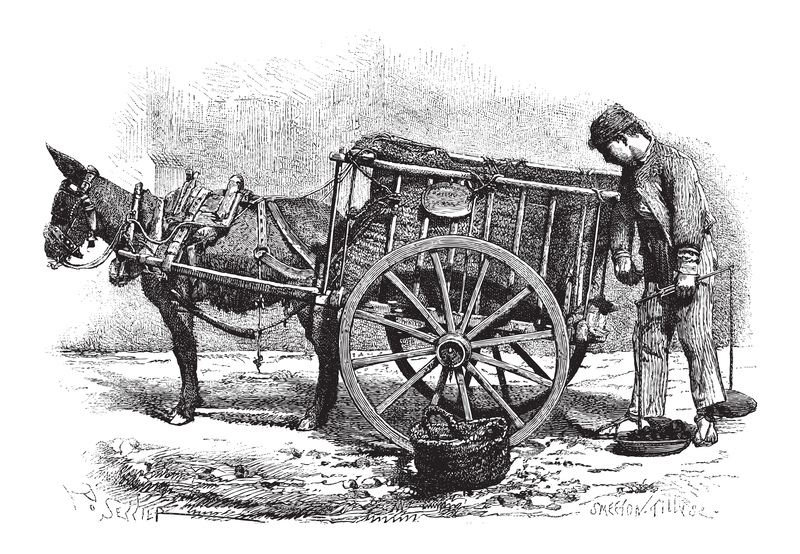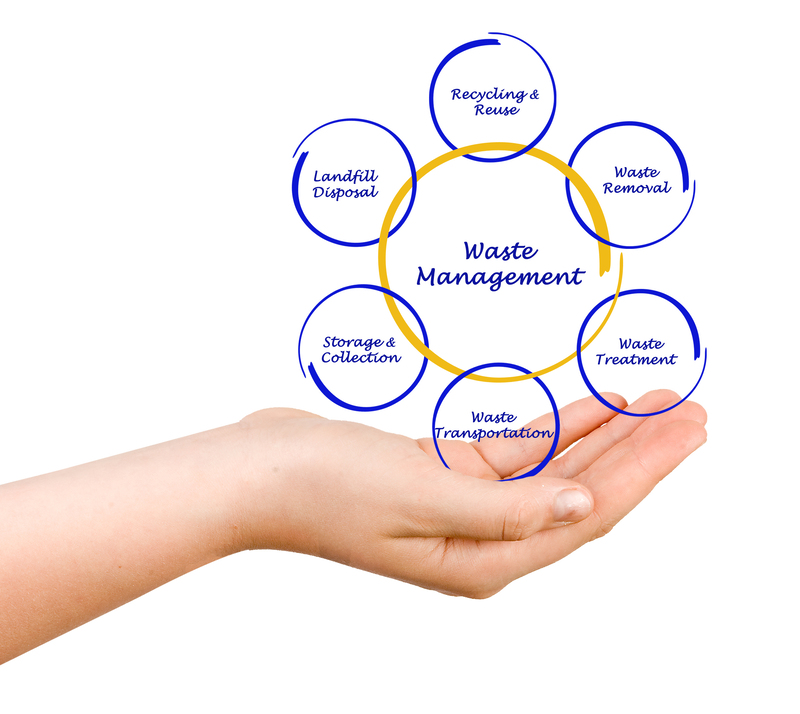Inspiring Others to Safely Dispose of Their PPE Waste
During challenging times, the use of Personal Protective Equipment (PPE) such as masks, gloves, and face shields has become essential. However, improper disposal of PPE waste poses a significant threat to our environment and public health. Inspiring others to safely dispose of their PPE waste is not just a matter of hygiene; it's a commitment to environmental responsibility and community well-being. In this comprehensive article, we will explore practical and creative ways to motivate safe PPE waste management, the impacts of negligence, and the steps everyone can take to ensure a cleaner, safer world.

Why Safe PPE Waste Disposal Matters
The Environmental Impact of Improper PPE Waste Disposal
Improperly discarded PPE, like single-use masks and gloves, often ends up in the wrong places: on sidewalks, in parks, and, most alarmingly, in our oceans and waterways. Here's why responsible PPE waste disposal is essential:
- Plastic Pollution: Most masks and gloves are made of polymers that do not biodegrade, contributing to long-term environmental pollution.
- Harm to Wildlife: Animals can mistake PPE for food or become entangled, leading to injury or death.
- Microplastic Formation: Over time, PPE breaks down into microplastics, contaminating soil and water sources.
- Spread of Disease: Used PPE may carry viruses or bacteria, posing a risk to sanitation workers and the public.
The Social and Health Risks of Neglected PPE Waste
PPE such as masks and gloves often carry contaminants. Disposing of them incorrectly can result in community health hazards, including the potential for:
- Virus transmission from contaminated surfaces
- Extra burden on healthcare and sanitation workers
- Reduced trust in public health measures
Encouraging others to safely discard PPE is vital for promoting hygiene and trust during ongoing public health challenges.
Effective Ways to Inspire Your Community to Dispose of PPE Waste Safely
1. Lead by Example
Perhaps the most powerful way to inspire proper PPE disposal is through personal action. Consistently disposing of your own PPE correctly in public settings--such as malls, parks, or public transportation--demonstrates responsibility. When others see you taking safe disposal seriously, they are more likely to follow suit.
- Place your mask and gloves in a sealed bin designated for medical or hazardous waste.
- Sanitize your hands after handling used PPE.
- Educate friends and family by sharing your actions and emphasizing their importance.
2. Educate and Raise Awareness
Education is a powerful tool for change. Many individuals are not aware of how to dispose of PPE correctly or understand the consequences of improper disposal. Hosting workshops, webinars, or creating informative social media posts can make a significant impact.
- Create infographics showing how and where to discard used PPE.
- Write blog posts or articles for local websites.
- Conduct short training or awareness sessions at schools or workplaces.
- Share government and healthcare advice on PPE disposal.
Inspire others with real-life examples and stories of positive change brought about by safe waste management.
3. Leverage Community Initiatives and Campaigns
Community-based programs can multiply the effects of individual efforts. Inspire communities to participate in PPE clean-up drives or start collection points for used PPE in busy areas. Public recognition of efforts can further motivate participation.
- Organize neighborhood or workplace PPE collection days.
- Partner with local businesses to provide PPE disposal bins.
- Initiate friendly competitions for the most waste collected safely.
- Share success stories through newsletters or community boards.
4. Use Digital Platforms to Inspire Safe PPE Disposal
Social media platforms present vast opportunities for spreading the message. Encourage your audience by posting photos or videos of your safe disposal efforts using trending hashtags like #SafePPEWaste or #PPEWasteAwareness.
- Share before-and-after images of cleaned public places.
- Host online challenges encouraging safe PPE disposal practices.
- Interview local leaders or environmentalists for their views on PPE waste management.
- Reward online engagement with small incentives, such as reusable masks or recognition certificates.
5. Advocate for Better Infrastructure and Policies
Sometimes, the barrier to safe PPE disposal is the lack of proper infrastructure. Advocate for more specialized PPE collection bins, signage, and public awareness campaigns in high-traffic areas.
- Petition local authorities to install PPE-only disposal containers.
- Work with schools, businesses, and municipalities to ensure proper labeling and instructions.
- Encourage governments to adopt new policies that promote safe and sustainable PPE waste solutions.
Simple Steps for Safe PPE Waste Disposal
Easy Guidelines to Follow
Teaching others the correct process for PPE waste disposal reduces the risk of contamination. Share these clear and simple steps with your network:
- Remove your gloves and mask carefully, avoiding contact with the outside surface.
- Place the used PPE into a dedicated, lined trash bin (preferably one with a lid).
- Wash or sanitize your hands immediately after disposal.
- If possible, double-bag PPE waste to prevent accidental exposure.
- Do not attempt to recycle single-use PPE, as most facilities are not equipped to process medical plastics safely.
Safe Disposal Tips for Businesses and Institutions
- Install prominent PPE disposal bins at entries and exits.
- Regularly empty and disinfect these bins.
- Train staff on handling and disposing of PPE waste securely.
- Display educational posters explaining the correct disposal method and its importance.
Creative Ways to Motivate PPE Waste Disposal
Gamification and Incentives
Transforming safe PPE waste disposal into a rewarding activity encourages wider participation. Use gamification by tracking and rewarding safe disposal habits at schools or within organizations.
- Reward points for each correctly disposed item, redeemable for small prizes.
- Recognize the most proactive individuals or teams in newsletters or social media.
- Set up monthly themes around safe, environmentally conscious behavior.
Integrating Art and Awareness
Art powerfully influences behavior. Schools and youth groups can create murals, posters, or digital art highlighting the effects of irresponsible PPE waste disposal and the benefits of collective action.
- Host art competitions with the theme "Clean Hands, Clean Planet."
- Use sidewalk chalk for messaging in public spaces with high foot traffic.
- Create educational videos or skits demonstrating proper disposal methods.
Role of Local Leaders and Influencers
Community figures, including teachers, local government officials, and social media influencers, can set a powerful example when inspiring others to dispose of PPE responsibly. Their voices amplify the message and foster a sense of shared duty.
- Encourage local leaders to demonstrate correct disposal during public appearances.
- Arrange influencer collaborations to promote safe PPE disposal habits online.
- Invite public figures to share testimonials about why they support responsible PPE waste management.
Understanding the Legal and Ethical Considerations
PPE Disposal Regulations
Different regions may have specific regulations for PPE waste management. Stay informed and ensure your community follows the latest guidelines for hazardous or medical waste disposal. This can include:
- Proper labeling of bins for infectious waste
- Dedicated transportation routes for PPE waste
- Coordination with licensed hazardous waste disposal services
The Ethics of Personal Responsibility
More than just following rules, disposing PPE waste responsibly is an ethical duty. It reflects a commitment to safeguarding not only our immediate surroundings but also the broader ecosystem for future generations.
Long-Term Vision: Reducing PPE Waste Altogether
Promoting Reusable Alternatives
When possible, opt for reusable masks and gloves made from washable materials. These alternatives significantly reduce the volume of waste generated and can be sanitized and used multiple times.
- Select masks with multiple layers for added protection and durability.
- Encourage local businesses or schools to produce and distribute reusable options.
- Educate others about proper cleaning protocols for reusable PPE.
Supporting Innovations in PPE Materials
Advances in sustainable materials are paving the way for biodegradable PPE. Communities can advocate for and support such innovations by:
- Choosing brands or suppliers offering eco-friendly PPE alternatives.
- Participating in pilot programs for biodegradable PPE products.
- Spreading awareness about the environmental benefits of sustainable PPE options.

Frequently Asked Questions on PPE Waste Disposal
Can I recycle my used mask or gloves?
No, most standard recycling programs do not accept PPE such as masks and gloves due to contamination risks and non-recyclable materials. Always place used PPE in a dedicated trash bin.
What should I do if I see discarded PPE in my area?
Wear gloves and, if available, use a litter picker to safely collect the PPE. Double-bag the waste and dispose of it in a sealed bin. Wash or sanitize your hands thoroughly afterward.
How do I encourage my workplace to take PPE waste disposal seriously?
Share this article and other educational resources, suggest installing prominent PPE disposal bins, and organize awareness talks or training sessions. Champion the initiative yourself to inspire others through action.
Conclusion: Be a Champion of Safe PPE Waste Disposal
The safe disposal of PPE waste is a shared responsibility that safeguards public health and protects the environment. By leading with example, educating others, fostering community initiatives, and supporting sustainable alternatives, you can inspire others to safely dispose of their PPE waste and build a culture of environmental and social responsibility.
Together, we can turn safe PPE waste disposal into a habit that lasts beyond the pandemic--creating a legacy of health and respect for nature.

